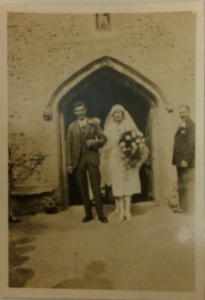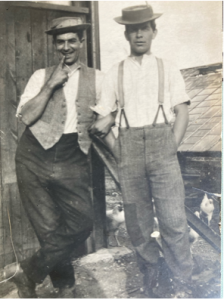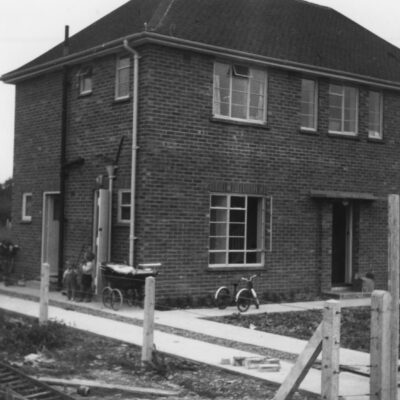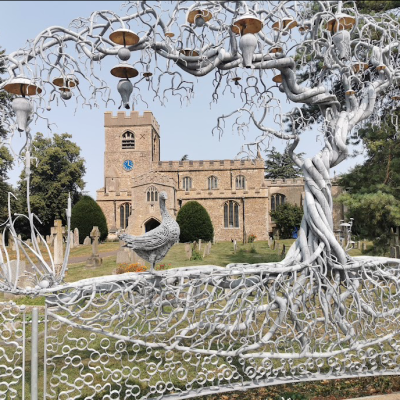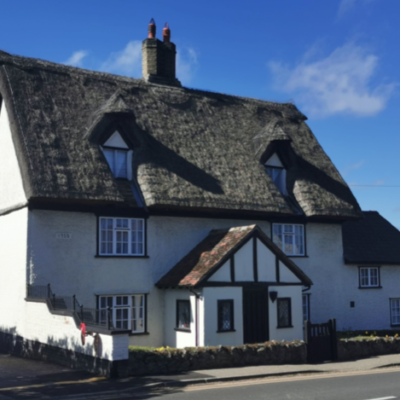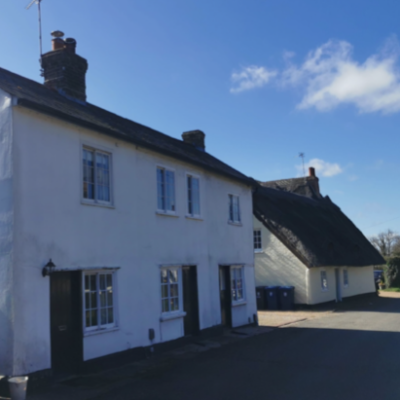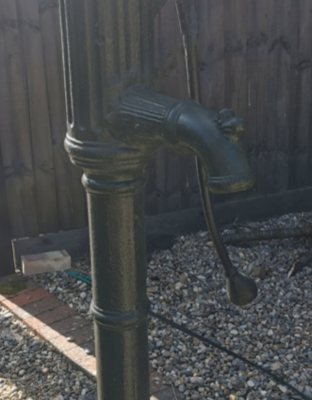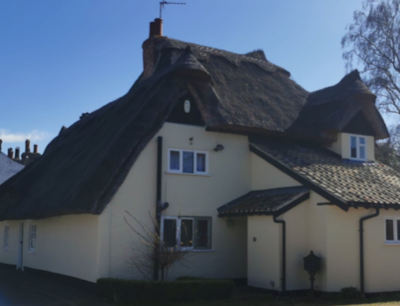Search by topic
- archaeology
- architecture
- bricklayer
- Building of Local Interest
- carpenter
- church
- crime
- dressmaker
- fire
- Great Eastern Railway
- listed building
- medieval
- oral history
- Public House
- Rattee & Kett
- Religious House
- Roman
- scholar
- school
- Then and Now
- tudor
- women
- work
- world war one
- world war two
Search by text
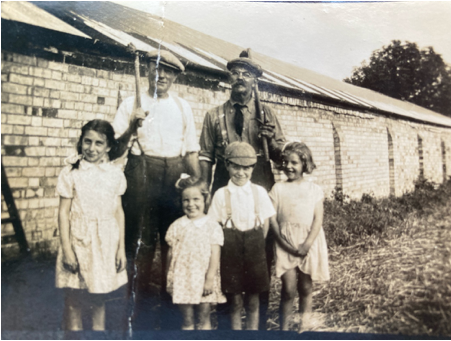 c. 1938 Trinity Farm, two farm workers with SB's mother, front left, Donald (with cap on) and Clifford's two eldest daughters (family)
c. 1938 Trinity Farm, two farm workers with SB's mother, front left, Donald (with cap on) and Clifford's two eldest daughters (family)Trinity Farm, Huntingdon Road (Trinity Nurseries)
History of Trinity Farm, Huntingdon Road
Susan Bussereau supplied Capturing Cambridge with the following account of the history of Trinity Farm in 2024:
Memories of Trinity Farm, Huntingdon Road, Cambridge
Family Background.
Henry John Carpenter (1871-1950) was the 6th child of Sykes Carpenter (1831-1921) and Maria Wilkinson (1828-1897). Sykes had very humble beginnings in Cambridge but eventually the couple were able to buy two brand new houses, one in Oxford Road in 1891, Camden House, from where they ran a laundry business, and 26 Richmond Road, which I visited many times as a child.
Henry married Florence Pearson (1868-1950) in 1900, the daughter of Charles Pearson who worked at Newmarket Racecourse. They had two children, Harrold Henry (1902-1972) and Clifford Sykes (1903-1975). Both grew up in Richmond Road. At some point after 1921 Henry and Florence moved into Trinity Farm farmhouse on Huntingdon Road, while Harrold remained in Richmond Road with his wife Mary Worship (1900-1979). Harrold and Mary had two children, Dorothy, my mother, born in 1930 and Donald (1934-2014). During my childhood Clifford and his wife Betty lived at Girton.
Trinity Farm
In the 1901 census Henry Carpenter was listed as a self-employed gardener, and by 1916 was listed as a market gardener. It is not clear when he scaled up to become a farmer with arable land and animal stock, or indeed where the money came from for him to purchase the farm or farmland. Henry used to go regularly to dining-in nights at Trinity College and I think it very likely, given the name of the farm, that there was a link there.
In the 1930s and 40s the family also rented and farmed arable land at Longstanton.
My mother remembers that Trinity Farm had a stall on Cambridge Market, selling their produce, which included cheese made at home by Florence. They also supplied chicken to the University and local hotels. During the war they also supplied rabbit, masquerading as chicken!
My mother spent much time on the farm and was very close to her grandmother. During her younger years Mum saw traction engines, shire horses and threshing machines at work, as well as muslin-wrapped cheeses hanging on the washing line and chickens being slaughtered. Henry worked on the farm for the remainder of his life. Harrold, who had to retire aged 65, went on to work for NIAB in Cambridge for a few years. They put in long hours of hard physical work and were exhausted at the end of the day. During the Second World War Italian prisoners of war joined the workforce. Many of these men stayed on in Britain after the end of the war, making their homes here.
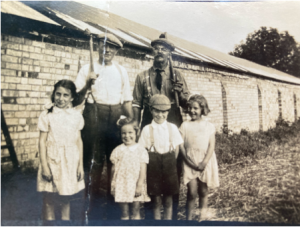
c. 1938 Trinity Farm, two farm workers with SB’s mother, front left, Donald (with cap on) and Clifford’s two eldest daughters (family)
Mum has never talked about the farm in bad weather or snow, when it must have been cold, damp and very muddy! She remembers the long warm summers when she, her brother, and four female cousins (Clifford’s children), would roam the fields from after breakfast until tea-time, playing games and enjoying the sunshine. The farm had a large population of cats to keep vermin down as well as an Old English Sheepdog called Duke who used to give rides to very small children and kittens!
The farm was sold after the death of Henry and Florence and by the 1960s during my childhood was owned by the University. Donald worked on the farm up until his retirement in the 1990s. When we visited, he would sometimes take us there with his children, to see the new-born lambs or piglets and those visits were my first experiences of feeding lambs with a bottle, climbing on straw bales and getting close to pigs.
Mum moved to Bedford with Dad in 1955 but memories of her young life on Trinity Farm have warmed and sustained her throughout her adult life until the present day and have enriched me also. Mum is currently in residential care. When a pair of therapy ponies were brought to the home a couple of months ago, it was the work horses of Trinity Farm that Mum wanted to talk about.
Sue Bussereau
July 2024
1841 Bridge Street
18613 Granby Yard, Bridge Street
1871 & 1881: Thompson’s Lane
1939 Trinity Nurseries
Henry Carpenter, b 1875, dairy farmer
1962
William A L David
Contribute
Do you have any information about the people or places in this article? If so, then please let us know using the Contact page or by emailing capturingcambridge@
License
This work is licensed under CC BY-NC-SA 4.0








